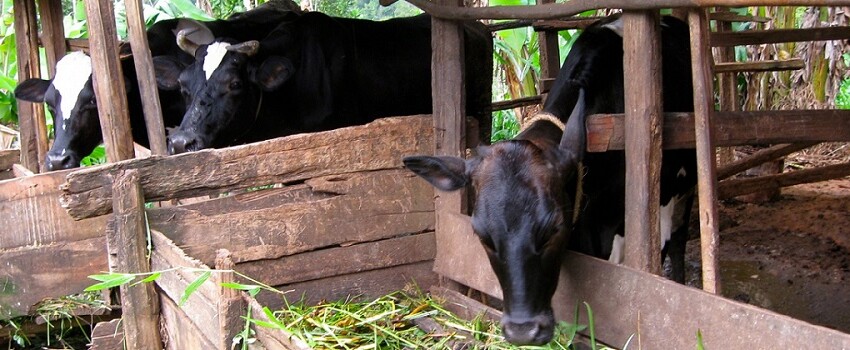

Milk boosters can be pellet or flour-based, and usually contain highly absorbable rumen bypass protein, rumen bypass lipids and fats. They are also compacted with high-energy products, enzymes, yeast, micro and macronutrients, as well as calcium and mineral salts.
High production
The use of milk boosters increases milk output by three to four litres in standard Friesian and Ayrshire cattle that weigh about 500 kilogrammes and produce 15-20 litres of milk daily.
Under good management and refined feeding methods that ensure the cow has its base requirements in energy and protein met, this increase could reach six to seven litres of added production.
Converting feed into milk
Milk boosters increase gut microbial growth and activity so as to reduce wastage and convert more feed into milk. There are various varieties of milk boosters available to farmers on the market, but most are not tailored to the particular geography and feeding programmes of specific farmers.
More proteins
The milk booster makes more metabolisable protein available to help a cow meet the amino acid requirements for maximum milk production and feed efficiency. It is mixed with dairy meal or sprinkled into a Total Mixed Ration (TMR). For every cow he says, 100-200 grammes is given daily depending on the cow’s production level, weight and post-calving stage.
Ratio
It not only improves milk production but also staves off a significant drop in milk output after production plateaus and starts to drop once the cow reaches its peak; usually after 80-100 days. At early lactation when milk production is at its peak a farmer can give 150-200 grammes daily, falling to 100-140 grammes at mid-lactation and to just 100-120 grammes at late lactation.
Dual purpose
The milk booster is dual purpose; besides added milk production, it improves the cow’s health and provides macronutrients such as calcium critical during pregnancy. Yakub recommends that farmers give 60-80 grammes of the booster one month to calving and gradually increase intake by at least 10 grammes to reach 100 grammes a couple of days to the calving date.
Essentially, a farmer should target getting the cow’s rumen to work efficiently in converting feed into milk and at the same time provide the animal with balanced nutrients for support of tissues and stimulation of udder alveoli to increase milk production.
To realise maximum benefits, nutritionists should work with farmers to implement modernised feeding methods; you cannot just feed freshly cut grass from the shamba directly to the animal, it will need to be weathered and/or fermented. farmers should also take into account the particular geographical location and tweak the milk booster formulation. Also farmers should conduct manure evaluation to determine the extent of digestion and fermentation of consumed feeds.
Withering, chopping and fermenting feeds all helps to improve intestinal digestibility and reduce the amount of energy a cow expends in chewing cud and digestion..
Sweet potato vines offer livestock more proteins
Livestock farmers can boost the Napier grass protein content by including sweet potato vines as well as storage roots in making ‘super’ silage. The commonest Napier grass varieties have a crude protein content of between seven per cent and 8.5 per cent.
In making use of the vines and non-commercially usable storage roots after harvesting, the materials, which are discarded after harvest, can be chopped and mixed with Napier grass for use after three months or more. Silage of sweet potato vine and roots offer livestock crude proteins of up to 14.75 per cent. This is significantly higher than common Napier grass varieties.
The best combination of the vines and storage roots should be in the ration of 3:1 respectively. A combination of the vines with Napier grass in the ratio of 5:3 respectively gave 9.7 per cent crude protein with a digestibility of 80 per cent of dry matter.
Vines among other nutrients is a core component of milk. The silage has a digestibility of 82 per cent. Well-made sweet potato silage is a wholesome and nutritious feed for all classes of cattle, goats and pigs. The silage is prepared by fermenting vines and storage roots, which are stored in absence of air.
In mixing the three, the ratio of Napier grass to vines and storage roots should be 5:3:2. However, during the ensiling period, the succulent vines and roots can present a challenge because of their high moisture content, which can cause rotting.
For small-scale farmers, the ensiling can be done using 17 litre buckets, which can be consumed once. This saves the rest from spoilage after opening. This is a perfect solution for farmers who discard the vines and the storage roots and peels after harvesting.
 Contact Jaguza Support
Contact Jaguza Support